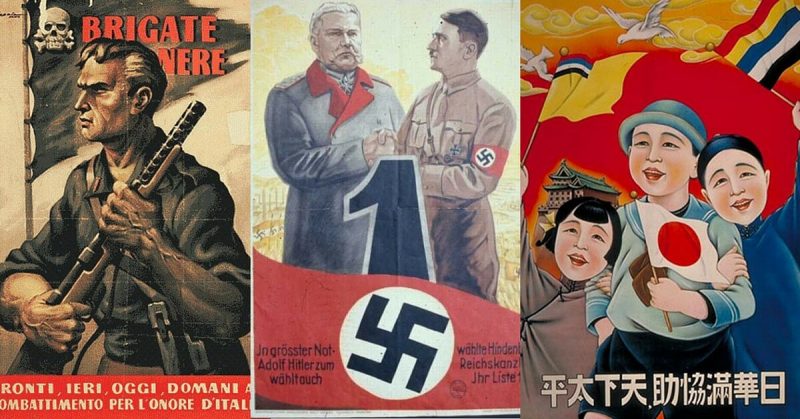I. 28 June 1919- Treaty of Versailles
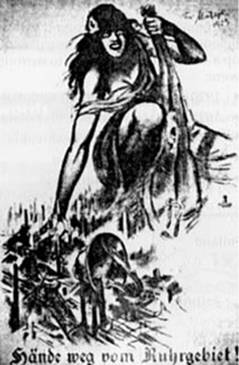
The peace treaty of Versailles was a humiliation for Germany. There are those who believe that the peace treaty was actually the main reason why the Second World War broke out. Germany had to sign the treaty after being
Germany had to sign the treaty after being defeated or risk a new war immediately, but that doesn’t mean their defeat would last an eternity. From today’s perspective, those 20 years of peace look like a prelude to the next war, one step at a time.
Image: ‘Hands off the Ruhr Area’
II. 3 April 1922 – Rise of Stalin
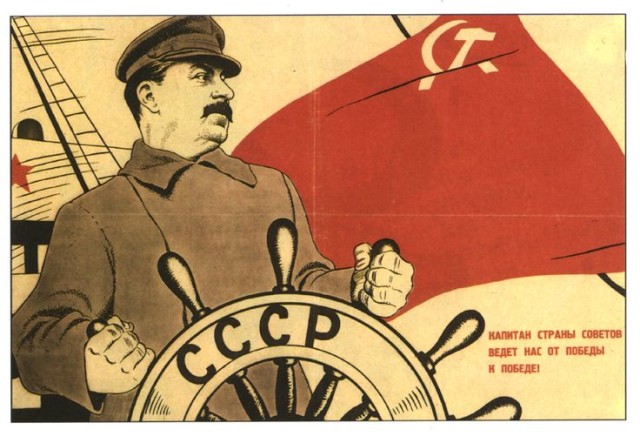
Lenin’s illness opened a door to power. Even though Lenin in his testimonial did not want Stalin to take the charge of the Soviet state, his will proved futile. Stalin slowly took control of Russia and often used the image of Lenin as his mentor in the background in propaganda posters.
Image: Stalin as a captain of the ship. A common metaphor in poems found its use on posters.
III. 31 October, 1922 – Mussolini and March on Rome
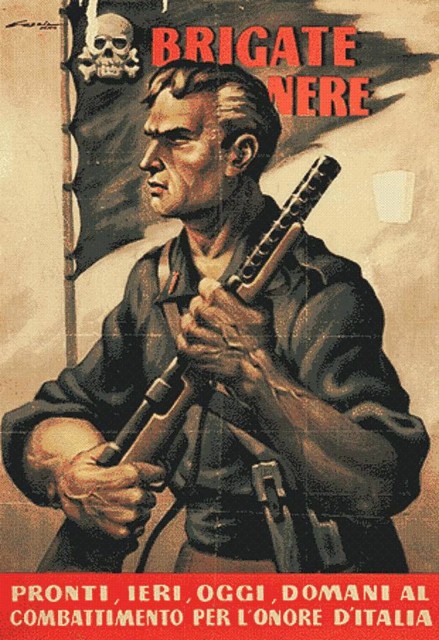
The March on Rome, from 22 to 29 October 1922, was a march by which Italian dictator Benito Mussolini’s National Fascist Party came to power in the Kingdom of Italy. King Victor Emanuele III, who feared that Civil War might occur, handed over power to Benito Mussolini. This rise of Fascism in Italy contributed to the eventual beginning of WW2.
Image: “Ready, yesterday, today, tomorrow, to fight in the name of honor of Italy.”
IV. 5 October 1925 – Treaty of Locarno
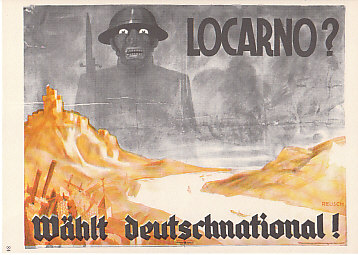
Locarno divided borders in Europe into two categories: western, which were guaranteed by Locarno treaties, and eastern borders of Germany with Poland, which were open for revision. The treaty led to Germany’s renewed claims to the German-populated Free City of Danzig and mixed ethnic Polish territories approved by the League of Nations including the Polish Corridor, and Upper Silesia.
The treaty also awoke distrust of Eastern Europe towards the western Allies. Czechoslovakia and Poland especially were disturbed about Locarno agreements.
Image: „Locarno? Wählt Deutschnational!“ – „Locarno? Choose German Nationalism!”
V. 29 October 1929 – Black Tuesday
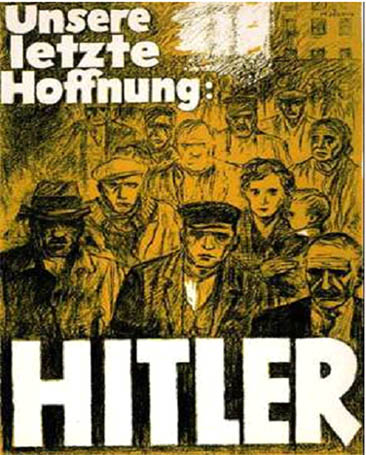
The Wall Street Crash of 1929 was the most devastating stock market crash in the history of the United States. The crisis hit Germany hard as the American loans which had financed their economy stopped. The unemployment rate reached nearly 30% in 1932 bolstering support for radical parties, the Nazi NSDAP, and Communist KPD. The rest of Europe also experienced the painful outcome of the crisis.
Image: “Our last Hope: Hitler” Hitler 1932 campaign poster.”
VI. 18 September 1931 – Japan invades Manchuria
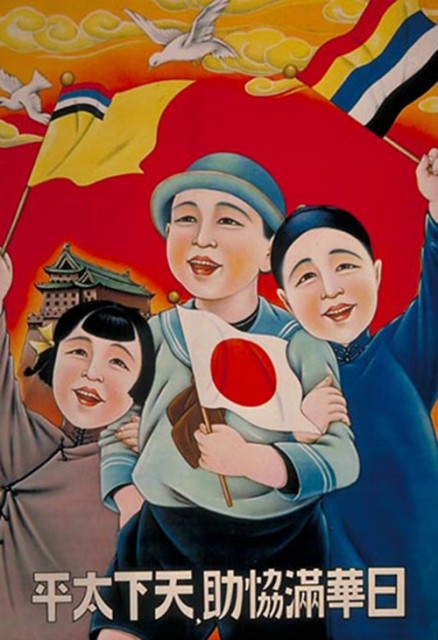
Japan also had ambitious and imperialistic plans in their area. In 1931, they created a provocation, known as Mukden Incident. The ruse of war was soon exposed, but it did not change much – the invasion of Imperial Japan of China began. Using images of kids on propaganda posters wasn’t a rare at that time.
Image: “With the cooperation of Japan, China, and Manchukuo, the world can be in peace.”
VII. 30 January 1933 – Hitler becomes Chancellor of Germany
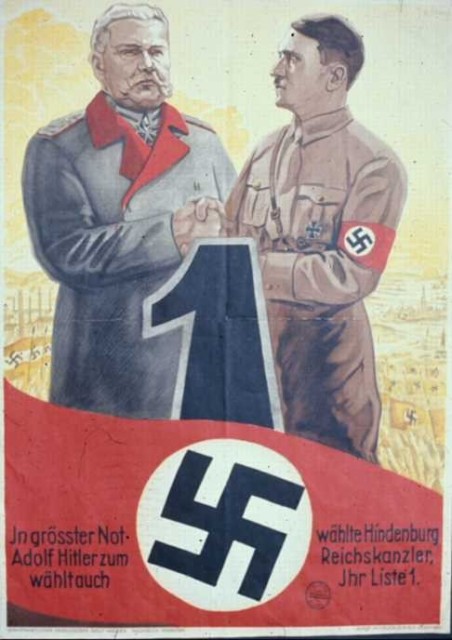
Technically Hitler won the election legally. His party was the biggest in the parliament but it did not have a majority. Soon after his election, Adolf Hitler disposed of the whole opposition and later the entire democratic system.
Image: “In the deepest need, Hindenburg chose Adolf Hitler as Chancellor. You too should vote for list 1.”
VIII. 2 October 1935–May 1936 Fascist Italy invades, conquers and annexes Ethiopia
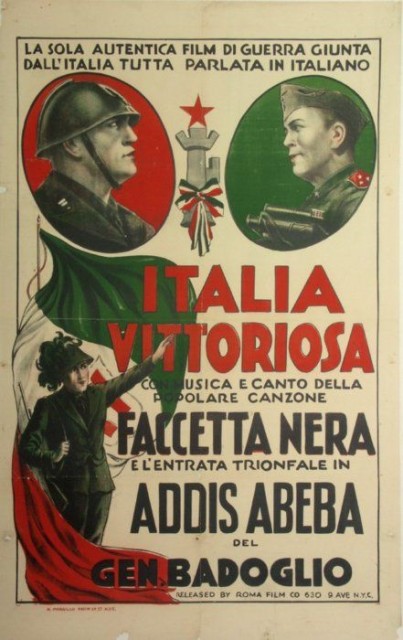
The victory was widely celebrated in Italy. Mussolini dreamed about a restoration of empire on the scale of ancient Rome. The first steps had been taken.
IX. 7 July 1937 – Japan defeats China in the Battle of Peking
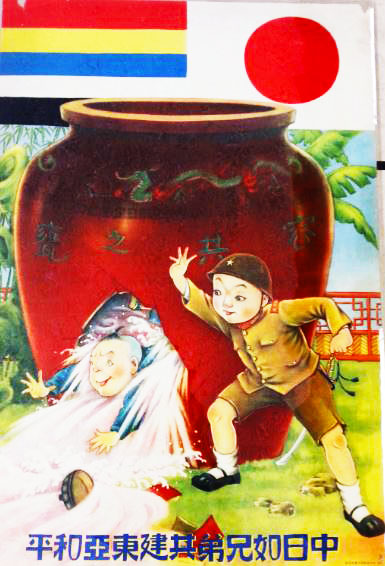
Imperialistic plans of Japan in the Asian area so far had been a massive success. The only threat toward their conquests was from the other side of Pacific – The United States and her navy.
Image: China and Japan Are Like Brothers that Build East Asian Peace Together
X. 13 March 1938 – Anschluss – Nazi Germany incorporates Austria
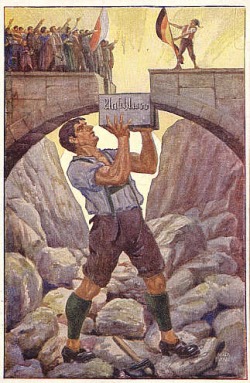
Germany slowly grows in power and territory. In 1938, Austria became part of the Third Reich, along with its economy and manpower.
Image: The word ‘Anschluss’ is written on the capstone. Another common slogan from 1938 was “Ein Volk, Ein Reich, Ein Fuhrer” (One People, One State, One Leader).
XI. 29 September 1938 – Sudetenland and Appeasement
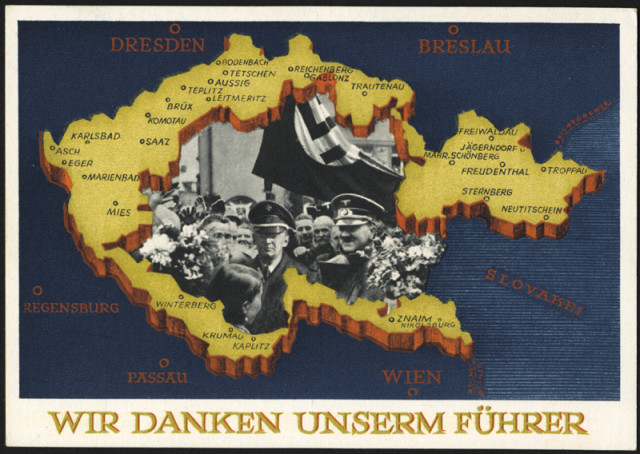
Great Britain and France made a deal with the Third Reich about ceding the Czechoslovakian region Sudetenland to Germany. They were hoping that would guarantee the peace in Europe and appeased Hitler’s appetite. They were wrong.
Image: „Wir danken unserm Fuhrer” – “We thank our Fuhrer”. In March 1939, Hitler seized the rest of Czechoslovakia.
XII. 1 September 1939 – Germany invades Poland
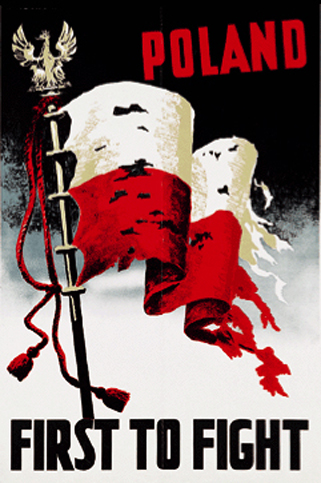
There was no peaceful nor diplomatic way to stop the Third Reich. No more compromises were made with Hitler and World War II began.
Image: “First to fight”, Poland was the first country attacked in full scale by Nazi Germany.
